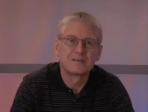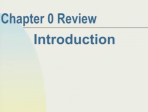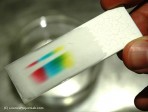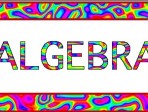 00:06:00
00:06:00
Algebra
How simple algebra can be used to investigate cubes and other polyhedra up to icosahedra.
More details | Watch now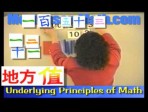 00:06:00
00:06:00
Algebra with Chinese subtitles
How simple algebra can be used to investigate cubes and other polyhedra up to icosahedra.
More details | Watch now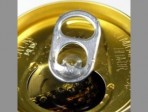 00:02:00
00:02:00
Aluminium drinks can tab
Bill uses slow motion video to show the ingenious engineering design of the apparently simple tab of a pop can.
More details | Watch now 00:15:00
00:15:00
Asthma on the Run
A look into the research of biochemist Ceri Harrop, who specialises in respiratory medicine and developing new treatments for people with breathing difficulties.nAs part of her research at the University of Manchester, Ceri meets with athlete Wayne A....
More details | Watch now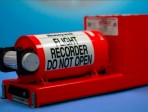 00:02:00
00:02:00
Black Box – A flight data recorder
In designing an object an engineer must choose the proper material. Never is this more important than in the 'black box' flight data recorder.
More details | Watch now 00:46:00
00:46:00
BuckyBall Workshop to Iceland
An Internet Buckyball workshop to 80 young children in Iceland which worked extremely well. It was the first test of the FSU Internet GEO project.
More details | Watch now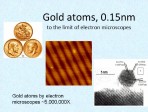 00:07:00
00:07:00
Can we see atoms?
We see smaller and smaller objects through naked eye and microscopes, from hair to atoms.
More details | Watch now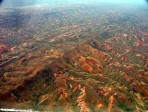 00:04:00
00:04:00
Climate Change: Madagascar
Anjali Nayar visited a pioneering project in Madagascar that's aiming to protect one of the country's few remaining forests. It's hoped that projects like this will help curb global warming. But first, these projects must overcome the poverty and pol....
More details | Watch now 00:03:00
00:03:00
Coffee Maker: Pumping water with no moving parts
To engineer an object means to make choices. Bill illustrates how the choice of having a single heating element made an engineer find a creative way to pump water with no moving parts.
More details | Watch now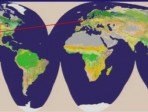 00:33:00
00:33:00
Communication on Earth, using Cables and Satellites
A brief look at the Physics behind sending signals along cables and via geostationary satellites. An experiment to measure the speed of an electrical pulse in a cable is described and the Physics of the orbits of communcations satellites is develope....
More details | Watch now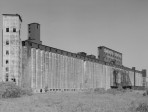 00:06:00
00:06:00
Concrete
Bill moves a piece of sewer pipe into his office to show how important the ancient material concrete is to our modern world. It, of course, wreaks havoc on his office.
More details | Watch now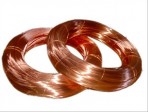 00:03:00
00:03:00
Copper – The Miracle Metal
Bill cuts a copper pipe from his ceilng to show the five properties of copper that make it the most important metal for our world: From clean water to electronics.
More details | Watch now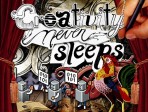 00:40:00
00:40:00
Creativity in Science Art and Design
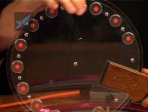 00:04:00
00:04:00
Electrical Generator
This short video shows one of the demonstrations for the Physics SEPNet exhibition - "Who will keep the lights on?" which travelled around the southern UK from February 2009. We describe and explain the electrical generator demonstration which Jona....
More details | Watch now 00:06:00
00:06:00
Emotion Recognition from Physiological Signals for Human Computer Interaction
Use of physiological signals for emotion recognition and human-computer interaction.
More details | Watch now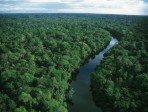 00:14:00
00:14:00
Environmental Scientist & Space Forester
Yadvinder works in the Geography department at Oxford University. He looks at how human activity and especially carbon dioxide emissions have changed the ecosystems of tropical rainforests. This work takes him on regular trips to his two research sit....
More details | Watch now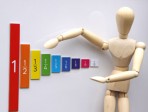 00:16:00
00:16:00
Fractions 3
Mutiplying and dividing fractions: a systematic approach to this perennial problem.
More details | Watch now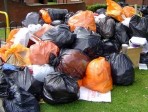 00:03:00
00:03:00
Garbage – Rubbish?
Bill covers his office floor with trash to see what takes up space in a landfill. He digs through fast food containers and diapers to learn that what we really need is green design of our manufactured objects.
More details | Watch now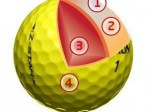 00:02:00
00:02:00
Golf Balls
To learn what's inside a golf ball - and to show how clever engineers are - Bill uses a special cutter to chop one open - well more than one.
More details | Watch now 00:07:00
00:07:00
Graphene and the Carbon Revolution
Jonathan explains what graphene is and how it fits into the revolution in carbon science.
More details | Watch now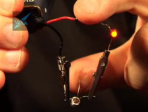 00:03:00
00:03:00
How does a transistor work?
A short video explaining how transistors work. At the heart of our high-tech society with radios, mobile phones, computers and space exploration are tiny electronic components called transistors. They have revolutionised electronics and in the pr....
More details | Watch now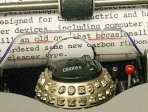 00:03:00
00:03:00
IBM Selectric Typewriter
Using slow motion video Bill Hammack shows how the mechanical digital-to-analogue converter of IBM's revolutionary 'golf ball' typewriter works.
More details | Watch now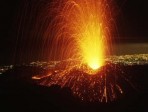 00:13:00
00:13:00
Journey to Etna
Clive Oppenheimer, a vulcanologist working on the latest techniques to monitor and predict volcanic eruptions, demonstrates his work at Mount Etna, an active volcano in Sicily.nVolcanic eruptions pose a real threat to communities living nearby, and a....
More details | Watch now 00:03:00
00:03:00
Maps
A brief introduction to getting over the problems of representing a sphere on a flat sheet.
More details | Watch now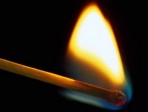 00:03:00
00:03:00
Matches
Bill reveals the importance of matches in the 19th century; he shares how adding phosphorous to them revolutionized life - in both good and bad ways
More details | Watch now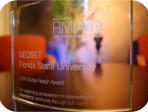 00:07:00
00:07:00
Mediasite global outreach competition winner – 2009
Steve's winning presentation in the Mediasite Global Outreach Challenge 2009
More details | Watch now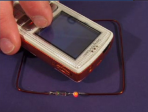 00:04:00
00:04:00
Mobile Phone
Jonathan shows us with a cheap and simple homemade demonstration how your mobile telephone generates radio waves in order for you to use it to communicate. As you will see you can use this method to explore many aspects of your mobile phone!
More details | Watch now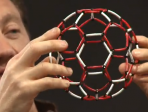 00:03:00
00:03:00
Modelling C60
 00:15:00
00:15:00
Music’s Energy Footprint
A look at how the UK music industry is working with energy and climate researcher Catherine Bottrill to reduce its carbon footprint.nIn 2007 a group of influential people from the music industry formed Julie's Bicycle, an organisation dedicated to re....
More details | Watch now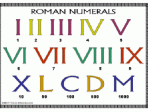 00:03:00
00:03:00
Numbers HK
Harry gives an introduction to the difficulty of writing large numbers in Roman Numerals
More details | Watch now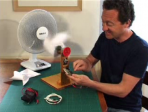 00:09:00
00:09:00
Paper Windmills
Jonathan makes some simple paper windmills/turbines and experiments with a simple generator to power house hold devices such as torches, calculators and even a radio.
More details | Watch now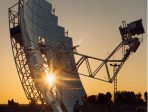 00:02:00
00:02:00
Parabolic Light Collectors
Parabolic surfaces can be used to concentrate energy for example to focus sunlight to heat things. Using an old World War II spot light mirror we demonstrate how easy it it is to concentrate enough energy to cause combustion. Finally, we show how to ....
More details | Watch now 00:04:00
00:04:00
Photocopier
Bill uses power tools to take apart a photocopier. He shows how it works, and shares the story of its invention by Chester Carlson.
More details | Watch now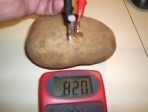 00:07:00
00:07:00
Potato Battery
When two different types of conductors are pushed into a potato chemical reactions take place charging them up - we have a simple electrochemical cell. A potato, zinc screw and carbon rod produce about 1V. We experiment joining a few of these cells u....
More details | Watch now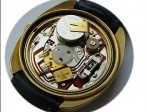 00:04:00
00:04:00
Quartz Watch
Bill takes apart a cheap watch to show how it works. He describes how a tiny quartz tuning fork keeps the time.
More details | Watch now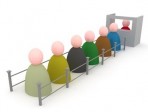 00:04:00
00:04:00
Queueing theory
Bill introduces queueing theory and uses it to design the most efficient check out line
More details | Watch now 01:06:00
01:06:00
Science and Art make comfortable bedfellows
With portrait painter Peter Edwards, Sir Harry Kroto discusses his love of art and science.
More details | Watch now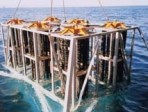 00:04:00
00:04:00
Seawater Battery
When two different metals are placed in a salt solution (an electrolyte) the chemistry produces a voltage. This is called a cell. By wiring up a number of these cells we can make a battery and use it to power electrical circuits.
More details | Watch now 00:10:00
00:10:00
Secret Science – Invisible Ink
An introduction to acids and bases using simple kitchen equipment and some 'invisible ink'.
More details | Watch now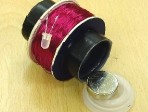 00:04:00
00:04:00
Shake-a-Gen
This is a simple yet effective demonstration of electricity generation. 500 turns of wire are wound onto a 35mm film can and the two ends are attached to an LED light. A strong magnet is placed in the can and the lid fixed back in place. The generato....
More details | Watch now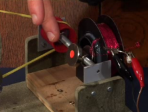 00:06:00
00:06:00
Simple Electrical Generator
With some simple circuitry and a homemade hand powered generator Jonathan makes AC and DC electricity that could be used for charging a mobile phone or attaching to a wind turbine.
More details | Watch now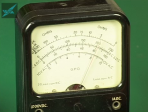 00:06:00
00:06:00
Solar Cells
A short video on solar cells explaining with accompanying information sheet. How they work and how Jonathan uses solar power at home.
More details | Watch now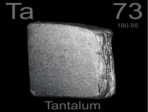 00:03:00
00:03:00
Tantalum
With his hammer Bill cracks up a cell phone to expose how our electronic gadgets rely on the mineral tantalum - mined as Coltan.
More details | Watch now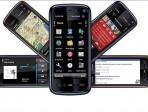 00:03:00
00:03:00
The Cell Phone
Bill invades a cell phone store to show that the design of a mobile isn't arbritary. Engineers uses seven basic principles to create a useful phone.
More details | Watch now